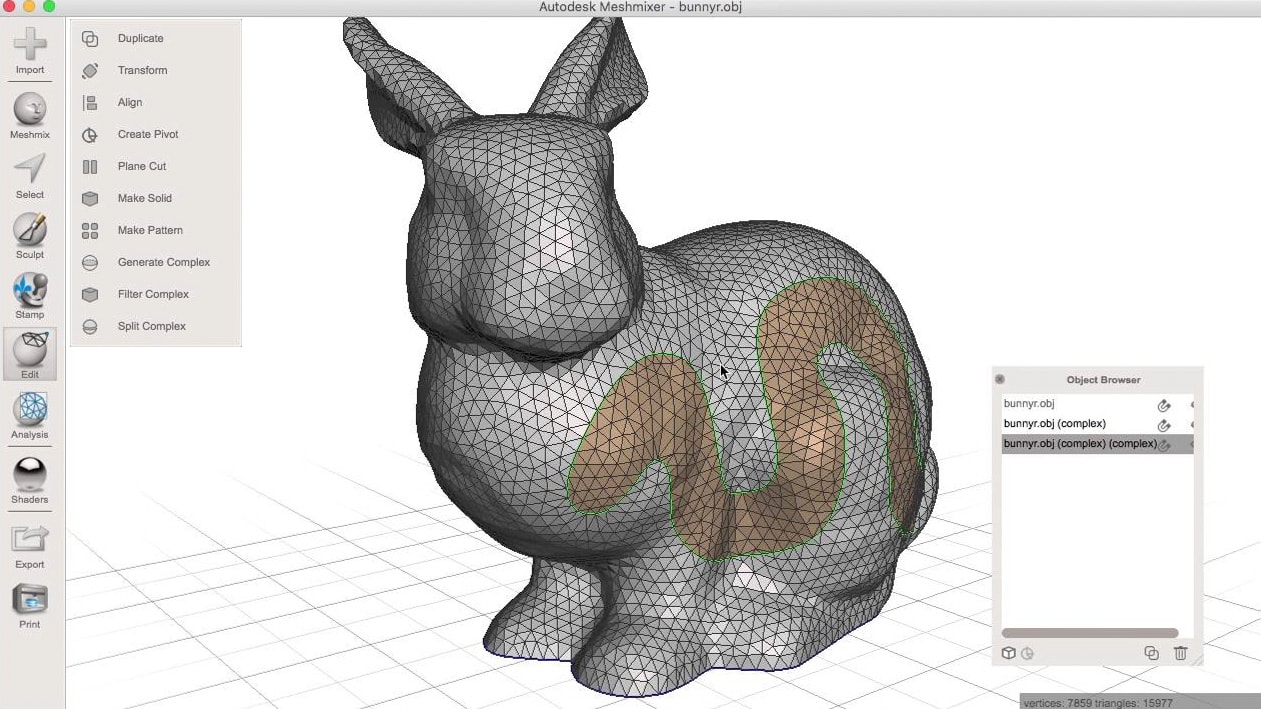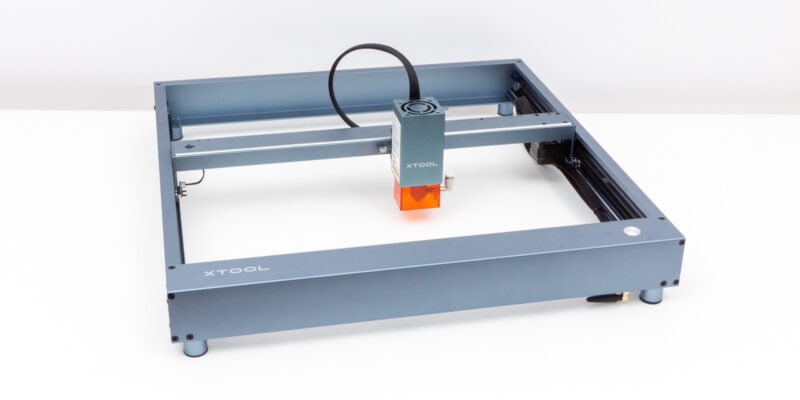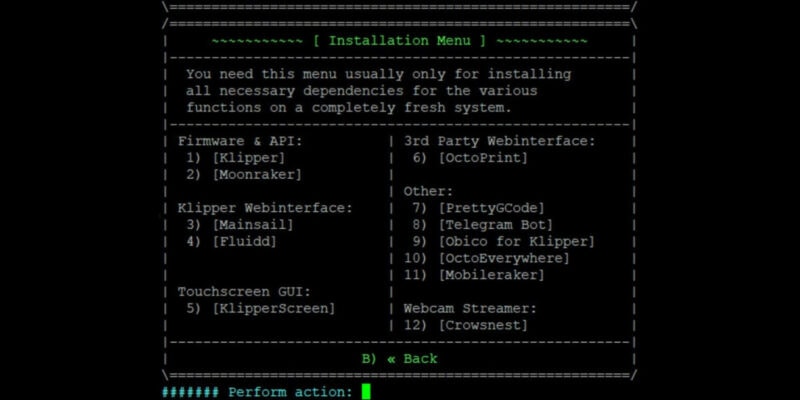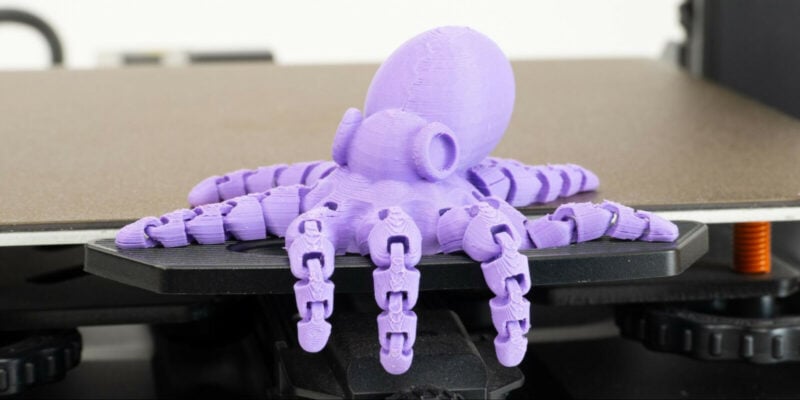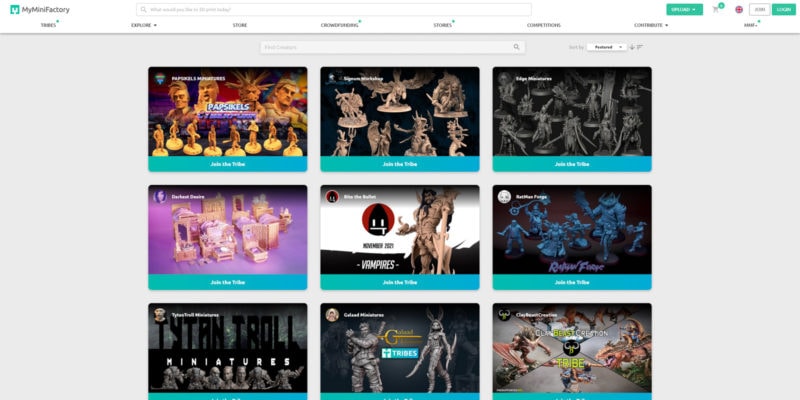3D printing has come a long way since the 80s. However, it is the revolution in the software side of 3D printing that has gone less noticed all these years. Software for modeling, slicing, mesh editing, and 3D printer control have gone through some very substantial development in recent times.
These programs form the basis of any good 3D printing workflow. Using a mix of good programs can elevate your 3D printing output substantially. But, with so many options to choose from and so many alternatives available, it becomes even more crucial to select the right one for your needs.
In this article, we’ve compiled for you a list of some of the best 3D printing software in various categories. Most are free to use, but there are some exceptions. That said, we have made sure to only include software that is available to anyone. No proprietary software in this list.
Let’s begin our 3D printing software journey!
| Software | Function | Printer type(s) | System | Website |
|---|---|---|---|---|
| 1. PrusaSlicer | Slicer | Filament, Resin | Windows, macOS, Linux | PrusaSlicer |
| 2. Cura | Slicer | Filament | Windows, macOS, Linux | Cura |
| 3. Simplify3D | Slicer | Filament | Windows, macOS, Linux | Simplify3D |
| 4. Ideamaker | Slicer, STL repair, Design | Filament | Windows, macOS, Linux | Ideamaker |
| 5. Craftware | Slicer, Design | Filament | Windows, macOS, Linux, Chrome OS | Craftbot |
| 6. Chitubox | Slicer | Resin | Windows, macOS, Linux | Chitubox |
| 7. Lychee Slicer | Slicer | Resin | Windows, macOS, Linux | Mango3D |
| 8. Kiri:Moto | Slicer, Design | Filament, Resin | Browser | Kiri |
| 9. Octoprint | Slicer, 3D printer host | Filament | Web browser, Windows, macOS, Linux, Raspberry Pi | Octoprint |
| 10. Mattercontrol 2.0 | Slicer, 3D printer host, Design | Filament | Windows, macOS, Linux | Matterhackers |
| 11. Astroprint | Slicer, 3D printer host | Filament | Web browser | Astroprint |
| 12. Repetier | Slicer, 3D printer host | Filament | Windows, macOS, Linux | Repetier |
| 13. Meshmixer | Mesh repair, Mesh edit, Design, Sculpt | All | Windows, macOS | Meshmixer |
| 14. Netfabb | Mesh repair, Part optimization, Print preparation | All | Windows | Autodesk |
| 15. Meshlab | Mesh Repair, Mesh edit | All | Windows, macOS, Linux | Meshlab |
| 16. Autodesk Fusion 360 | Design | All | Windows, macOS | Autodesk |
| 17. FreeCAD | Design | All | Windows, macOS | FreeCAD |
| 18. Blender | Design | All | Windows, macOS, Linux | Blender |
| 19. Sketchup Free | Design | All | Browser | Sketchup |
Slicers
1. PrusaSlicer
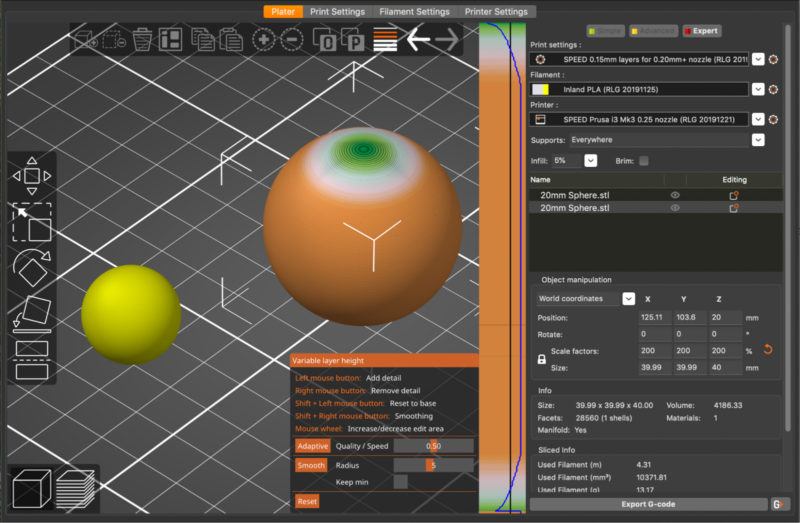
PrusaSlicer is one of the few slicers that are well known to deliver quality results with reliability. It is a forked version of the Slic3r Prusa Edition, which was based on the original Slic3r. Although most of the elements remain similar to the Slic3r PE, a key difference in the PrusaSlicer is its custom, fine-tuned profiles for the Prusa 3D printers.
The PrusaSlicer has profiles for all Prusa 3D printers, including Prusa SLA 3D printers. The great thing about the PrusaSlicer is that it’s completely open-source and you can use it with any 3D printer. With the latest updates, the PrusaSlicer now has inbuilt profiles for over fifty 3D printers from eight different manufacturers.
The ability to integrate PrusaSlicer with other 3D printers allows you to utilize its unique features in your workflow. You can create custom supports using the mesh modifier, use variable layer heights in your model to balance speed and quality and you can set up multi-color 3D prints right inside PrusaSlicer.
The above-mentioned features are just for FDM 3D printers. If you have a SLA 3D printer, PrusaSlicer has some of the leading features for them too. Along with this, you get great community support on the official forums, as well as a company that actively listens to its users. This makes the PrusaSlicer one of the top choices for 3D slicers available right now.
- Price: Free
- Intended for: Beginners and advanced users
- What makes it stand out: Both FDM and SLA 3D printer support
- Platform: Windows, macOS, Linux and Chromebook
2. Cura

Ultimaker Cura is one of the most popular 3D printing slicers that is used worldwide right now. Originally developed by David Brahm, Cura was later on taken in by Ultimaker. Since then, we have seen some monumental updates in Cura’s feature set.
The reason behind Cura’s popularity can be attributed to two of its major features: an open-source nature and a vast integration of 3D printer profiles. The open-source nature of Cura has allowed developers from all around to develop a great set of features that significantly enhance its usability.
Some notable features of Cura are its tree supports, intent profiles, Cura connect, Cura cloud, and plugin integration. These plugins allow you to create custom supports, connect to Octoprint, auto-orient the part for optimal printing and so much more.
The plugins also let you import your CAD models from software such as Solidworks, Inventor, SIEMENS NX, right into the slicing environment. This allows for a tightly integrated workflow, letting you seamlessly control the entire process from a single software. And if you ever run into problems, there’s a great user community to sort out all your issues with ease.
- Price: Free
- Intended for: Beginners, advanced and professional users.
- What makes it stand out: Plugin support and CAD integration.
- Platform: Windows, macOS, Linux
3. Simplify3D

Simplify3D is one of the flagship 3D slicers in the 3D printing community. It certainly is the leading slicer that provides reliable advanced features that are easy to use. For example, the support structures in Simplify3D are some of the best amongst any 3D slicer out there.
Simplify3D also lets you customize each individual setting on different parts with ease. You can connect and control your 3D printer, repair and fix any broken meshes, and even adjust the filament flow dynamically for really thin sections in the model. These are just some of the noteworthy features and there are many other things that Simplify 3D does better than the rest.
There’s even a great support community and many tutorials that you can use to fine-tune your Simplify3D settings. However, all of this comes at a price. Simplify 3D is a paid slicer and for users who want a hassle-free, plug-n-play kind of 3D printing experience it is a good choice.
- Price: $149 one-time purchase
- Intended for: Beginners, advanced and professional users
- What makes it stand out: Easy to use, can handle complex objects with ease, and supports 100+ 3D Printers.
- Platform: Windows, macOS, Linux
4. Ideamaker
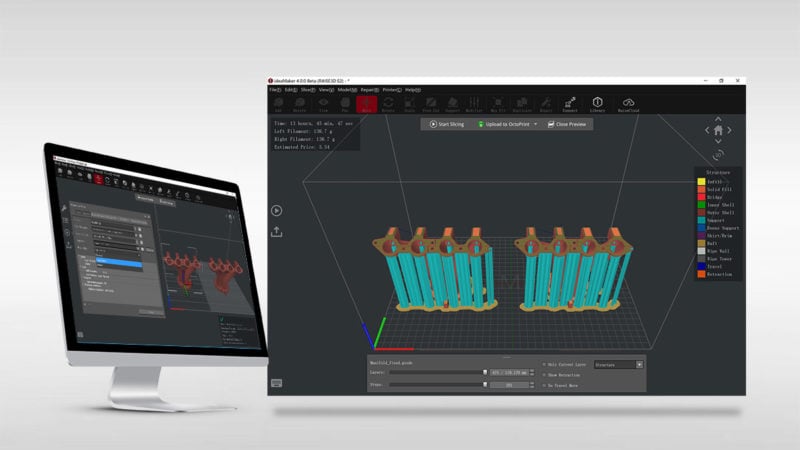
Ideamaker is a 3D slicer that’s developed by Raise 3D, primarily for their own lineup of 3D printers. It is a part of the company’s software suite that comprises the Ideamaker library and Raise cloud. Together, all three software form a seamless link that executes the 3D printing process flawlessly.
Ideamaker is rather unique in its own rights. It offers a brilliant and unique set of features while still being user-friendly. It is one of the few slicers to offer Boolean operations built into the software itself. Its support generation feature is also easy to use, and you can view the supports before actually slicing the model.
There are plenty of other features, such as textures, free cut, and mesh modifiers that let you prepare your model to the utmost perfection. You can also see this perfection in the many slicer profiles that are available for free in the Ideamaker library.
The merits of the Ideamaker lie in the fact that it is a fast, feature-rich slicer with support for over 100+ other 3D printers. And when you combine the features of the library and a remote 3D printing solution with Raise cloud, this slicer can be a perfect companion for your Raise 3D printer.
- Price: Free
- Intended for: Beginners, Advanced and Professional users
- What makes it stand out: Textures, Boolean operations and easy support functionality
- Platform: Windows, macOS, Linux
5. Craftware
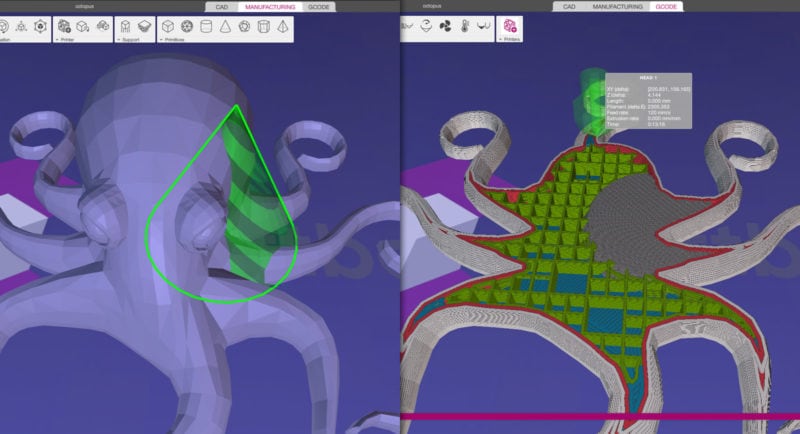
This 3D slicer might be relatively unknown to many 3D printing users. Craftware is the primary slicer that ships with Craftbot 3D printers. Even though it has profiles available for only the Craftbot lineup of 3D printers, it still supports other 3D printers as well.
The Craftware slicer aims at providing the user with a holistic 3D printing experience and incorporates some basic CAD features as well. It doesn’t lack in slicing features either.
It has multiple slicing modes which allow you to quickly slice objects. The multi-tray feature is unique and lets you simultaneously set up multiple projects on various 3D printers in a single space. There are also plenty of features in the Gcode view that let you examine every element of the sliced object in detail.
However, it can take some time to get used to the Craftware UI and its other features. Another thing to note is that the Craftware 3D slicer has both free and paid versions. The latter offers more features that are aimed at improving the overall productivity of your workflow.
- Price: Free and Premium version
- Intended for: Advanced and Professional users
- What makes it stand out: CAD features, operation of multiple 3D printers at once, and detailed Gcode preview
- Platform: Windows, macOS, Linux, ChromeOS
6. Chitubox
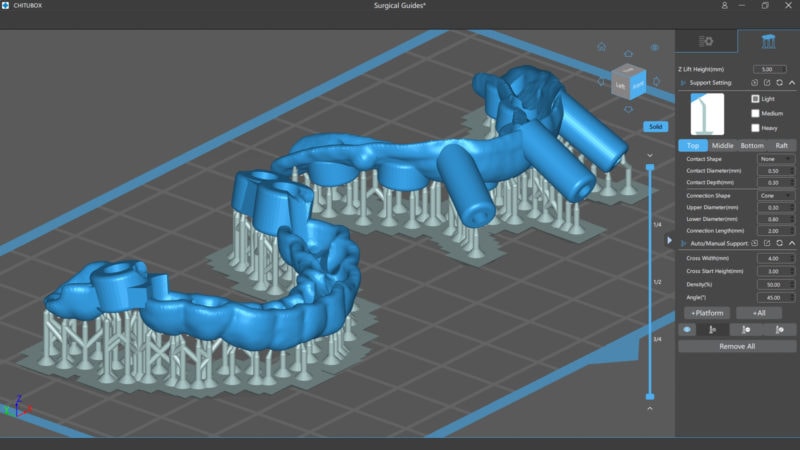
Chitubox is the flagship slicer that is available for a wide variety of resin 3D printers and comes bundled with all Elegoo 3D printers. Its clean UI combined with rich features makes Chitubox one of the most popular and widely used resin 3D printing slicers.
There are over 70+ 3D printer profiles that are readily available to use in Chitubox. It is well-known for its ease of use and support structures. You can choose to use the default supports (which are pretty great) or you can customize them. It also lets you hollow out your entire model, letting you save some precious 3D printer resin.
The Chitubox comes in two different versions, Basic and Pro. For anyone who is considering getting a resin 3D printer, Chitubox is a great 3D slicer to go with it.

- Price: Free for Chitubox Basic and $169 for Chitubox Pro
- Intended for: Basic, Advanced and Professional users.
- What makes it stand out: Ease of use, fast slicing, quality and customization of support structures.
- Platform: Windows, macOS, Linux.
7. Lychee Slicer
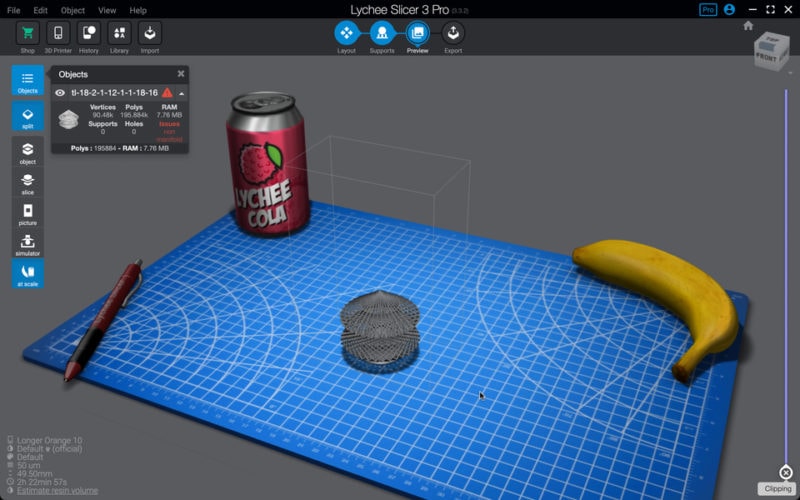
Lychee Slicer is another powerhouse in the realm of resin 3D slicers. It is developed by Mango 3D and is a powerful alternative to Chitubox slicer. Both slicers share a good amount of powerful features between them.
You get the magic menu feature in Lychee slicer, that lets you quickly prepare a model with a single click. There are also various options available to customize and fine-tune your support structures to get the optimum balance between quality and 3D printing cost. However, the customization level of supports fades when compared to Chitubox slicer.
There are plenty of other features, like the print simulator, viewing objects at scale, and the ability to add some basic parametric shapes, that make the Lychee slicer a lot of fun to use. While the free version is more than enough for hobbyist 3D printing, the premium version is where the Lychee slicer truly shines, especially for professional use.
- Price: Free and Paid plans for the Pro version ranging from €2.49 to €3.99 per month.
- Intended for: Basic, Advanced and Professional users
- What makes it stand out: Speed, real-time operations, support management, and one-click slicing
- Platform: Windows, macOS, Linux
8. Kiri:Moto
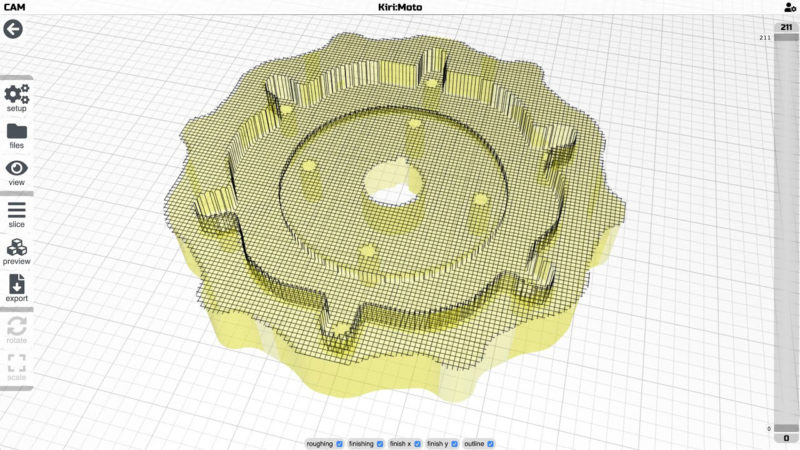
The Kiri:Moto software is one of the most versatile pieces of software on this list. It is a browser-based software that lets you slice 3D models for FDM and SLA 3D printing. And if you’re into CNC and Laser engraving, Kiri:Moto lets you prepare files for those purposes as well.
Since it runs through a browser, you access it from virtually anywhere without being tied to any specific system. It also has a clean and well-laid-out UI that you can get used to quickly. Kiri:Moto is rich in the features that it offers and has enough settings to let you customize and slice your 3D models with precision and ease.
Kiri:Moto comes with readily available profiles for some popular 3D printers and CNC machines. Expert users, however, might feel a lack of settings to fine-tune their projects. Still, it is impressive when you consider that it runs on the cloud and not your local machine.
So, if you are someone who is getting started with maker machines and is adventurous in trying out new software, Kiri:Moto can prove to be a good choice for your next project.
- Price: Free
- Intended for: Basic, Advanced and Professional users.
- What makes it stand out: Browser-based operation, 4 in 1 functionality, easy to use UI.
- Platform: Google Chrome, Mozilla Firefox, Safari.
Host / Control software
9. Octoprint
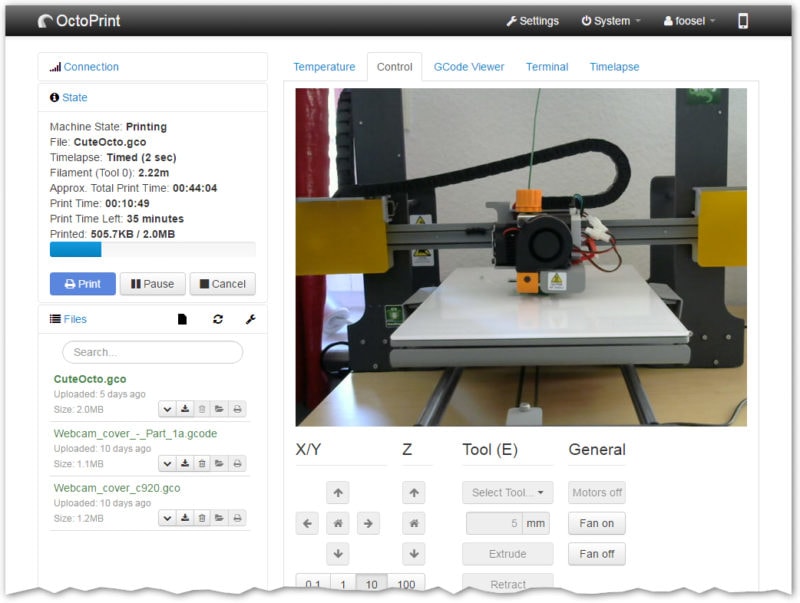
Octoprint as software in itself is a testament to the power of the open-source community. Gina Häußge developed it as software to manage and control 3D printers with the help of small single-board computers like Raspberry Pi’s.
You can control, monitor, and manage 3D printers remotely from your couch, office, or anywhere else through your mobile device with ease. You can slice your STL files, visualize your bed level, get push notifications of your current 3D print’s progress, and much more with Octoprint. All of this is made possible because of Octoprint’s powerful plugin system.
Its most unique feature would be Octolapse, which lets you create stunning time-lapses of your 3D prints. You can even scale Octoprint and manage multiple 3D printers together with Octofarm.
The fact that it is open-source has led to a huge support community that is always ready with help for your issues. Many slicers have even integrated Octoprint into their software to allow for a flexible user experience. So, if you don’t want to be tied down next to your 3D printer, Octoprint could be a great companion for your remote 3D printing needs.
- Price: Free
- Intended for: basic, advanced and professional users
- What makes it stand out: Wireless 3D printing, huge plugin repository, and Octolapse functionality
- Platform: Raspberry Pi computers
10. Mattercontrol 2.0
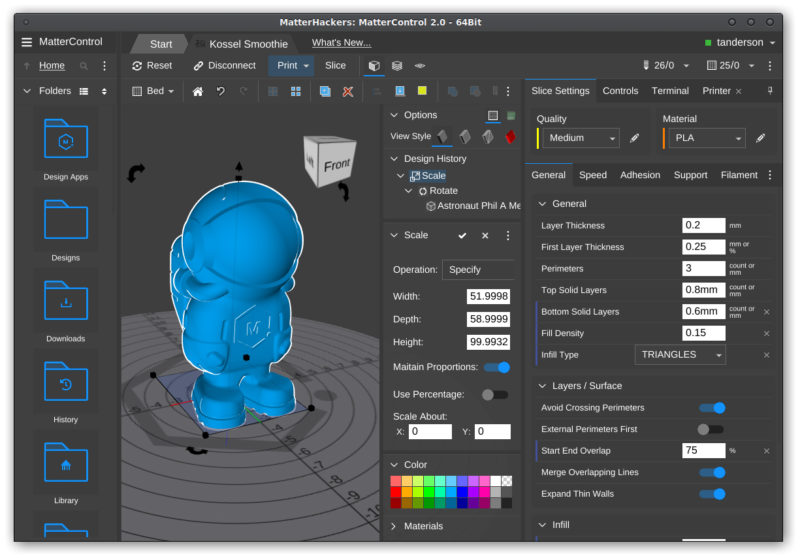
MatterControl 2.0 is a complete package of CAD software, 3D slicer, and 3D printer controller. Developed by Matterhackers, this piece of software is a great option for those of you who like to have complete control over the 3D printing process.
MatterControl has a clear UI with easy-to-understand features. There are enough manual control options available in MatterControl to control your 3D printer to your liking. For example, you can create and customize your own macros to execute specific commands whenever you want. The printer calibration feature lets you calibrate your bed leveling before you begin your 3D print. You will need some sort of probe, like the BLTouch, installed on your 3D printer for this.
Besides this, the MatterControl library lets you create, store and search designs for your next 3D printing project. The primitives in MatterControl are some basic shapes that you can just drag into your build plate to create models or even custom supports.
The strength of MatterControl lies in how well it ties together the different aspects of 3D printing in one software. It can be a great choice for someone who’s looking for a single piece of software to execute their basic needs of 3D printing.
- Price: Free
- Intended for: Basic, Advanced and Professional users
- What makes it stand out: Well laid UI, CAD features, easy to set up manual controls and live tuning adjustment
- Platform: Windows, macOS and Linux (beta)
11. Astroprint
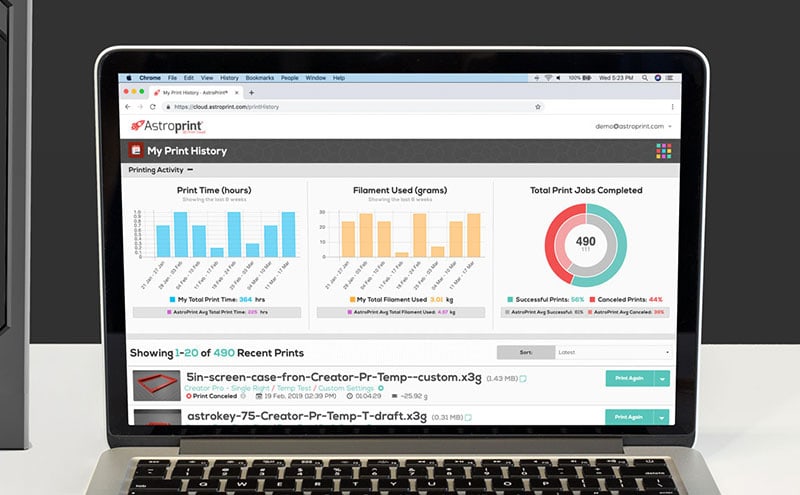
In its essence, AstroPrint is like Octoprint. It is, however, a more streamlined version of some of the best features of Octoprint. AstroPrint is a more user-friendly, plug-n-play host software solution for 3D printers.
Astroprint’s user interface is more inviting and easy to understand for beginners in 3D printing. The features in Astroprint are designed to be executed on most mobile devices with ease. One offering of Astroprint is Astrobox. It is a pre-configured kit that allows you to make any 3D printer wireless and cloud-connected.
It natively supports multiple 3D printers, cloud slicing, remote 3D printing monitoring, and many other features. You can even print designs directly from Thingiverse and MyMiniFactory using Astrobox. You also get detailed analytics of your 3D prints and a cloud storage system for all your models.
AstroPrint can be scaled up easily. Its premium plans allow you to add multiple 3D printers and even offer some amazing features which would be beneficial for 3D printer farms. It is this scalability and ease of use that makes AstroPrint suitable for everyone, from a novice to a seasoned professional.
- Price: Free and paid premium plans
- Intended for: Basic, Advanced and Professional users
- What makes it stand out: Easy to set up and use, user-friendly mobile UI, Astrobox kits
- Platform: Raspberry Pi computers
12. Repetier
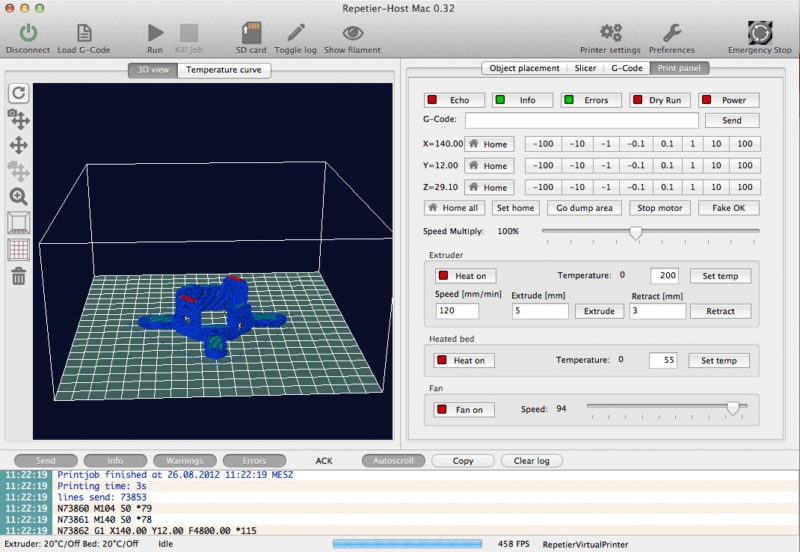
Repetier is a 3D slicer and a 3D printer control software bundled into a neat package. Originally, it was developed together with firmware for the early models of RepRap 3D printers. Now, it has grown into a suite of software that offers some unique features to the 3D printing process.
Repetier in itself is a 3D slicer that allows you to control your 3D printer via a USB cable, ethernet connection, or even wirelessly over your local network. You can use it in combination with Repetier server to get even more functionality out of your setup.
The level of manual control in Repetier is unique in its own rights. You can send Gcode on the fly, you can execute custom scripts using buttons, and monitor and control other parameters of your 3D printer with ease.
You unleash the true potential of the Repetier software when you use the entire Repetier suite together. The Repetier firmware, Host, Server, and the Informer app together create a unique and holistic ecosystem for your 3D printer. Using all these together lets you enjoy the benefits of true wireless 3D printing.
- Price: Free
- Intended for: Advanced and Professional users
- What makes it stand out: Multiple 3D slicing engines, Informer app for push notifications, and complete 3D software solution from firmware to wireless control
- Platform: Windows, macOS, Linux
STL Modification
13. Meshmixer
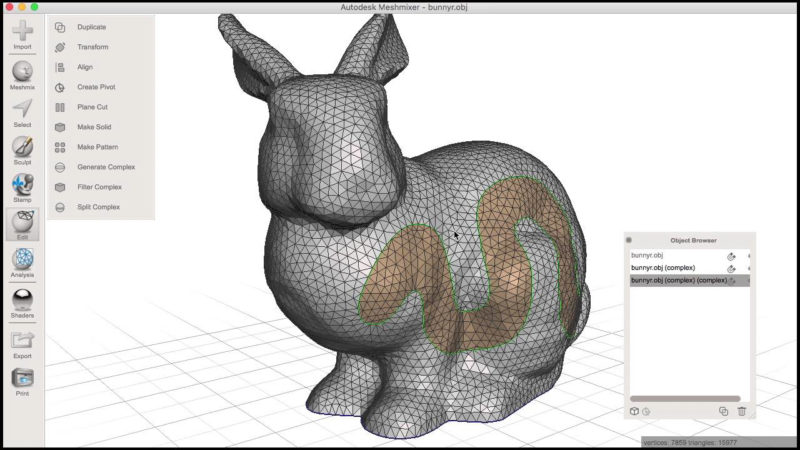
Meshmixer is a 3D mesh editing software developed by Autodesk. It is one of its flagship pieces of software for editing all kinds of 3D meshes. Meshmixer’s website refers to it as the ‘‘Swiss Army Knife’’ for 3D meshes.
Meshmixer operates on triangle meshes, which form the basis of many 3D models today. With Meshmixer you can repair 3D scans, analyze them, and even customize them for 3D printing. Besides giving you tools to work with meshes, it also lets you sculpt your own 3D models with ease.
The UI of the Meshmixer is well laid out, with features that are easy to understand and use. Even if you get stuck anywhere, there’s a lot of community support for the software owing to its free nature and tons of powerful features.
- Price: Free
- Intended for: Advanced and Professional users
- What makes it stand out: Powerful 3D mesh editing tools, large support community, free to use
- Platform: Windows, macOS
14. Netfabb
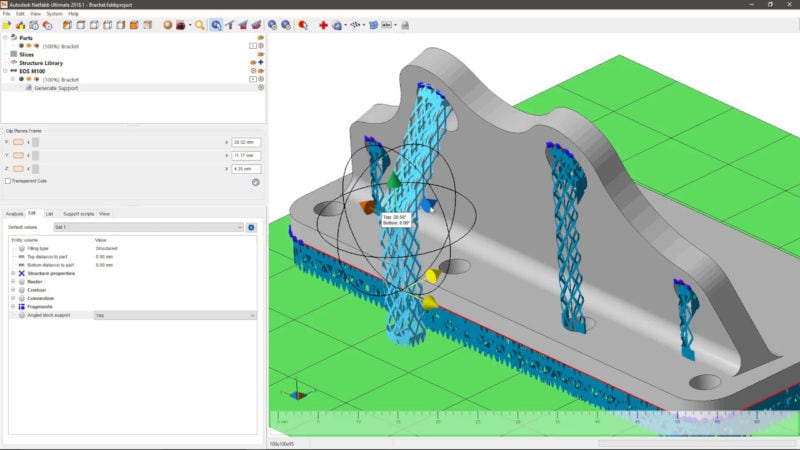
Netfabb is a refined and professional offering by Autodesk for maximizing your additive manufacturing capabilities. Netfabb offers features that allow you to prepare your parts for 3D printing in the most optimal way. You can even import models directly into Netfabb from many popular 3D modeling software like Solidworks, SIEMENS NX, and Autodesk Inventor.
Because both were developed by Autodesk, Netfabb offers seamless integration with Fusion 360. With Netfabb you can optimize your 3D models for 3D printing, repair any defects, and even neatly pack your parts on the build platform for maximum efficiency. Netfabb also offers model simulation to help you produce your 3D printed parts in the best way possible.
Its custom support generation and easy-to-use lattice creation tools are some of its features that make Netfabb a good choice for professional 3D printing. It comes in three different licensing options – Standard, Premium and Ultimate, with each option offering its own set of features.
- Price: Paid options of various tiers
- Intended for: Advanced and Professional users
- What makes it stand out: Easy file sharing, model optimization tools, ability to create custom supports, simulation of 3D printed parts
- Platform: Windows
15. Meshlab
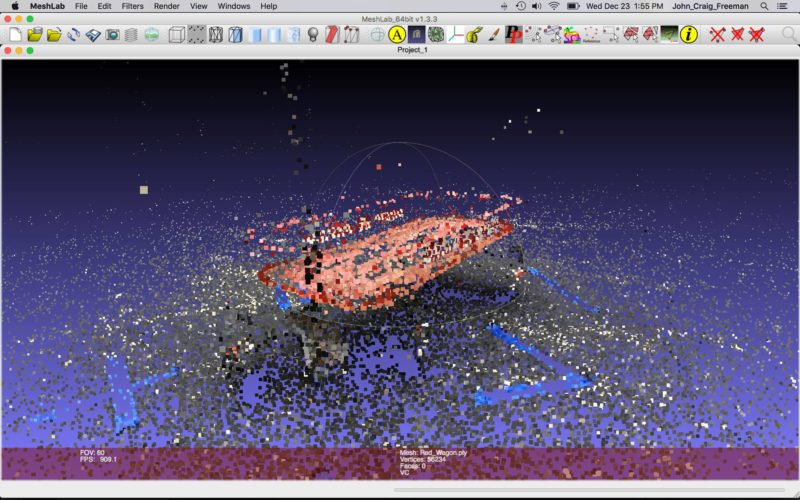
Meshlab is a great free and open-source tool that is majorly used for editing and repairing 3D scans. Although it supports major formats of 3D printing such as STL, OBJ, X3D, its main strength lies in editing and repairing point cloud data from 3D scans.
It was developed with ease of use for professionals in mind, while also giving access to many advanced features required for optimal 3D scanning workflow. Meshlab lets you clean up models, reconstruct broken triangles, repair faulty 3D meshes and even color map your 3D models.
Meshlab offers a host of features and tools, and it does take some time to get familiar with each of them.
A distinguishing feature between Meshlab and Meshmixer is that Meshmixer is optimized for 3D printing, whereas Meshlab as a software lacks optimization for 3D printing or other specific use case scenarios.
There is some support available for Meshlab, however, it is not as exhaustive as that of Meshmixer. That said, Meshlab is still an excellent choice if you are looking for a program to clean and repair your 3D scans.
- Price: Free
- Intended for: Advanced and Professional users
- What makes it stand out: Color mapping, texturing, aligning 3D scanned data, color processing, analysis features
- Platform: Windows, macOS, Linux
3D Modeling
16. Autodesk Fusion 360
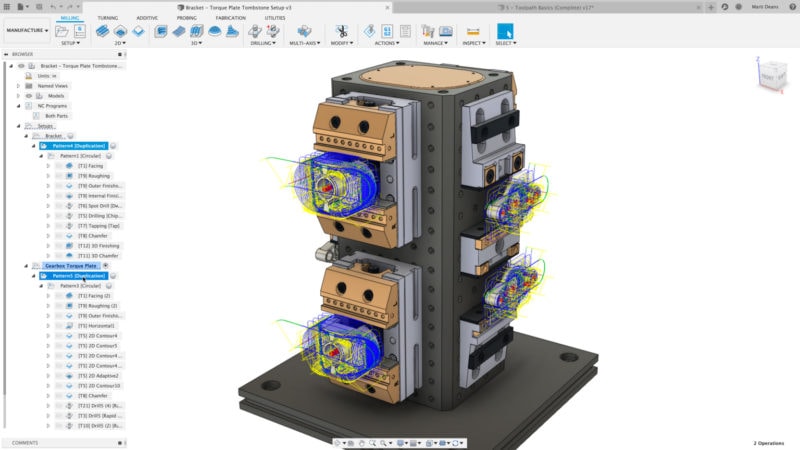
Fusion 360 is one of Autodesk’s crown jewels in the software lineup. It is a cloud-based modeling software designed primarily as CAD software that’s aimed as an all-in-one solution for the entire manufacturing process.
Fusion 360 is a complete suite of CAD, CAM, and CAE features that lets you control your entire workflow. The CAD features are some of the best in the market right now. Some of its advanced features include generative design, topology optimization, and some amazing PCB design tools.
On the manufacturing front, Fusion 360 offers support for additive manufacturing with native integration for 3D printers like the Ultimakers, EOS and Renishaw. It even offers CAM functions for 3 axis CNC milling along with water jet, laser and plasma cutters. Additionally, the simulation features in Fusion 360 are some of the best in class.
Combine all of this and you have a piece of software that lets you quickly reiterate your designs. All these features do come at a price, however. That said, it is still cheaper compared to competitors like Solidworks and Inventor.
- Price: $38 – $60 per month depending on the license choice
- Intended for: Beginners, Advanced and Professional users
- What makes it stand out: Easy to use UI, cloud storage, generative design, CAM integration, and simulation capabilities
- Platform: Windows, macOS
17. FreeCAD
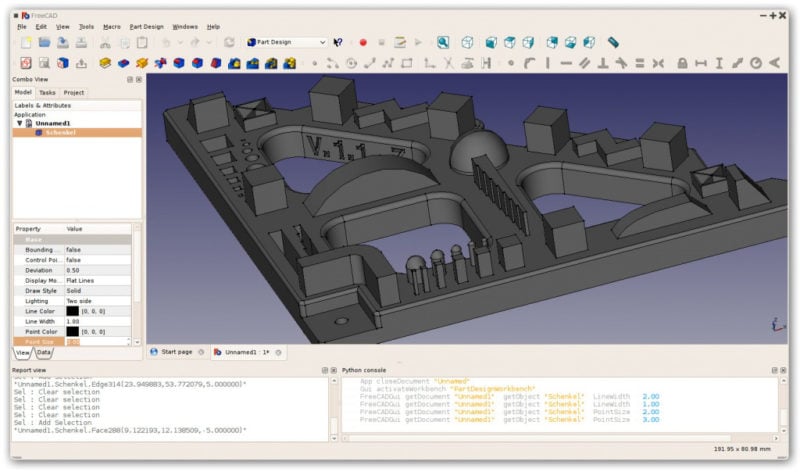
FreeCAD is a powerful and open-source parametric 3D modeler. In its essence, it has all the features that you would expect from CAD software and then some. The fact that it is free to use for life is a nice bonus.
FreeCAD offers a great set of CAD tools that let you design objects for any niche you’d like. It also lets you import and export into an array of file formats natively, allowing for maximum compatibility. Its constraint-based 2D sketching is one of its flagship features and is great to use.
There is an exhaustive list of workbenches in FreeCAD that lets you achieve many complex tasks with ease. And if you don’t find a certain feature, you can always try your luck with an inbuilt add-ons manager that lets you integrate specially built plugins.
You can also find a great support community built around FreeCAD that lets you navigate issues with ease. The trio of open-source nature, free-to-use tools, and feature-rich design make FreeCAD a great CAD software for anyone to have.
- Price: Free
- Intended for: Beginners, Advanced and Professional users
- What makes it stand out: File formats compatibility, open-source nature, plugins integrations
- Platform: Windows, macOS, Linux
18. Blender
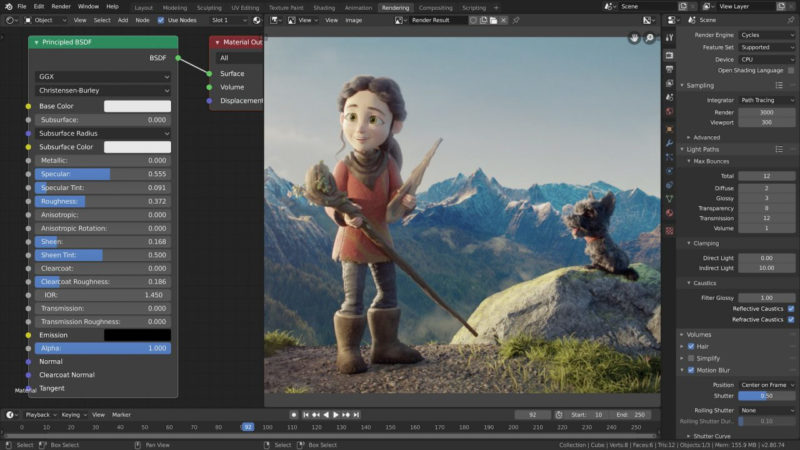
Blender is a complete suite of 3D creation tools that are primarily aimed at production studios. Tom Roosendaal wrote the software in the 90s as an internal production tool for NeoGeo. Now, thanks to a great community, it has grown way beyond anyone could’ve imagined.
With Blender, you can create some amazing 3D models, sculpt them, and even add textures to them. Blender also lets you render 3D environments, create entire animations and add visual effects. It is very unlikely, however, that you would use these advanced features of Blender if you are only using it for 3D printing.
The UI of Blender is not exactly intuitive. But once you get the hang of it, its workflow is pleasant to use. And because it is completely free and open-source, it has its own set of advantages. There are many videos and tutorials that you can use to learn what you need along with a great support forum in case you get stuck anywhere.
- Price: Free
- Intended for: Beginners, Advanced and Professional users
- What makes it stand out: Free to use, Open source, great community support, simulation capabilities, basic video editing tools
- Platform: Windows, macOS, Linux, Steam
19. Sketchup Free

Sketchup Free is a web-based 3D modeling software for designers, engineers, architects, and film and game industry professionals. It provides you with some basic, yet great modeling tools that let you create and edit 3D models with ease.
Sketchup Free has a user-friendly UI and even a novice user can easily get familiar with the software. It also has a 3D warehouse feature, which lets you download and use a selection of already designed 3D models. This can save you considerable designing and editing time.
You can import and export STL files, making it a useful 3D printing tool. However, the ability to import CAD models, apply textures, and many other advanced features are limited to the Pro version. Nonetheless, a 10 GB cloud storage, a good collection of modeling tools, and a warehouse full of 3D models make Sketchup Free a good choice for basic 3D printing.
- Price: Free
- Intended for: Beginners, Advanced and Professional users.
- What makes it stand out: Browser-based software, 3D warehouse, Sketchup viewer, and ease of use.
- Platform: Browser
Conclusion
There you have it! Some of the best 3D printing software of 2024. While this list is not all-encompassing, we have made sure to include the best and most feature-rich free programs to get you started with your 3D printer. We would love to hear your thoughts on the list and be sure to share it other if you found it useful!
